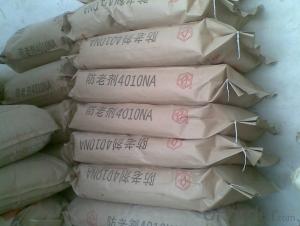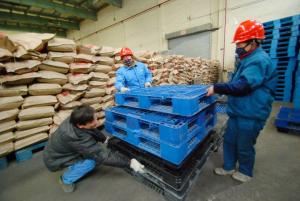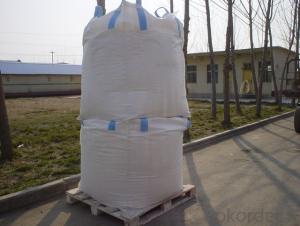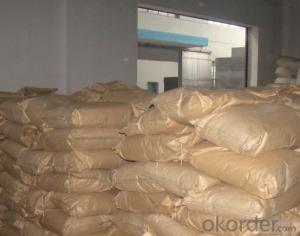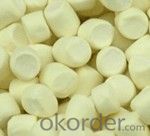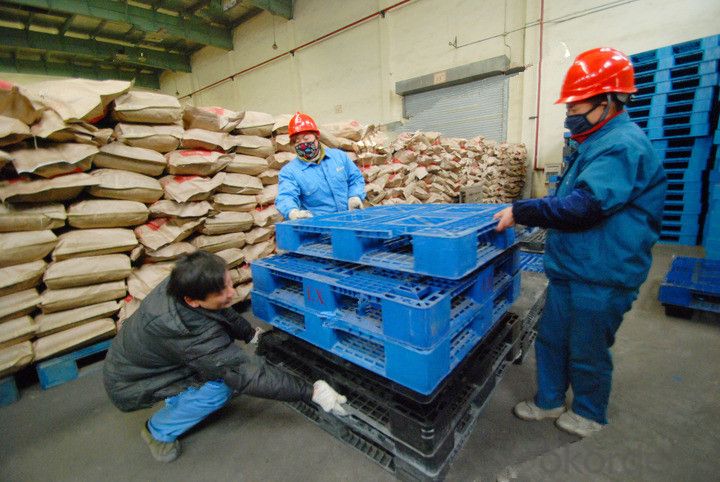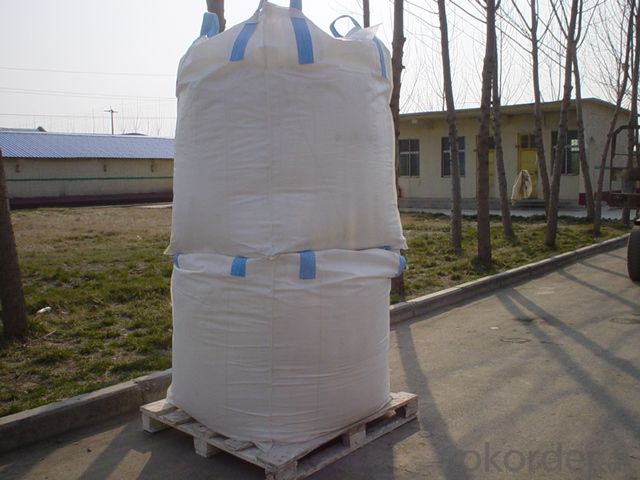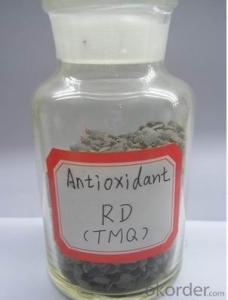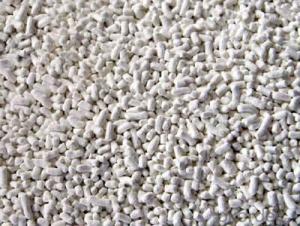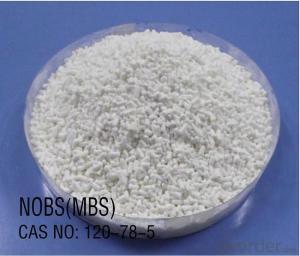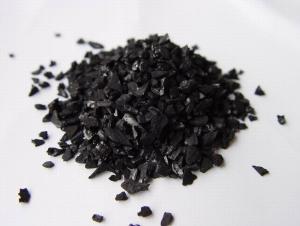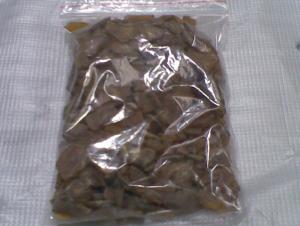Rubber Chemcials Rubber Antioxidant Model TMQ
- Loading Port:
- Tianjin
- Payment Terms:
- TT OR LC
- Min Order Qty:
- 25 m.t.
- Supply Capability:
- 12000 m.t./month
OKorder Service Pledge
OKorder Financial Service
You Might Also Like
RD (TMQ)
Chemical Name:2,2,24-Trimethy 1-1,2- Dihydroquinoline content
Molecular Weight: (173.26)n
CAS No.:26780-96-1
Executive standard: GB/T 8826-2003
Specification:
Item | Index | ||
High Content | High Class Product | First Class Product | |
Appearance | Amber to light brown flake or granular | ||
Softening Point ℃ | 90.0+10.0 | 80~100 | |
Heat Loss % ≤ | 0.30 | 0.30 | 0.50 |
Ash% ≤ | 0.20 | 0.30 | 0.50 |
Assay % ≥ | 77.0 | -- | -- |
Isopropyl-bis aniline % ≤ | 0.20 | -- | -- |
Issolubles in alcohol % ≤ | 0.50 | -- | -- |
Properties: Pale yellow to amber power or thin.Nontoxic Not soluble in water, soluble in benzene.Chloroform,acetone and carbon disulfide,Miro-soluble petroleum hydrocarbons.
Application:The product is particular excellent kinds od eneral-purpose ammonia anti-ageing agent.Ti particular suit to full-stell,semi-steel radial tire and it apply to many kinds of the tires,rubber tube,gummed tape, rubber overshoes and general industrial rubber producers and also suits to emulsion products.
Packing:25kg paper bag inner with PE bag.
Storage:The product should be stored in the fry and colling place with good ventilation. The product should be avoid hot sunshine.
- Q: Is the catalyst considered a chemical reaction?
- The catalyst is involved in the reaction, but in the reaction process is a step in the effect of its shape has not changed, so that did not participate in the reaction.The role of the catalyst is to reduce the activation energy of the reaction, the original one reaction into two or Multiple reactions, each sub-reaction of the activation energy is very low, the reaction is very good, the effect is the total reaction faster. Hope to adopt
- Q: Why the catalyst after the chemical reaction of its quality and chemical properties unchanged
- The catalyst is only a catalytic role, not directly involved in the reaction, the current principle of its role is not clear
- Q: What is a catalyst?
- The catalyst plays a role in a variety of ways that are likely to temporarily alter the chemical changes associated with the reactants themselves, and may also only help to adsorb the physical changes in the reactants, but the reaction eventually becomes its own form The
- Q: Chemistry why the catalyst can be equal to speed up the positive reaction rate
- Since the catalyst only changes the activation energy and the amount of reactivity can be reduced, the amount of reaction energy is also reduced. Therefore, a positive catalyst is also a good catalyst for its reaction. Speed up the same multiple.
- Q: Is the catalyst in the chemical reaction better?
- If the concentration of the liquid is too low, then the catalyst is also ineffective
- Q: What is chemical adsorption and its relationship with heterogeneous catalysis
- The catalytic cycle includes five steps: diffusion, chemical adsorption, surface reaction, desorption and reverse diffusion.The chemical adsorption is an important part of the heterogeneous catalysis process, and the adsorption of the reactants on the catalyst surface,
- Q: Please make it simple because I need it for school and please give to examples for the second part Thanx :D
- A catalyst is a substance that speeds up the rate of a chemical reaction with itself being chemically unchanged at the end of the reaction. They are useful as they help to lower the minimum amount of energy needed ( also known as activation energy) to start the reaction. Hence, by lowering the activation energy of the reaction, they help to speed up the rate of reaction. For example, in the Haber process for the manufacture of ammonia, the catalyst iron is added to speed up the rate of reaction between hydrogen gas and nitrogen gas. Otherwise, the reaction would have proceeded much more slowly. Another example is the catalyst nickel used in the manufacture of margarine and vanadium (V) oxide for manufacturing sulfuric acid. As catalyst remain chemically unchanged after a reaction, they can be reused again and hence, they are required in minute amounts. An example is the washing powder used in washing clothes, they help to remove food stains by digesting the proteins in food. They can be reused after each reaction and hence, you do not need to add in the whole packet of washing powder but only a few spoonful.
- Q: Is it possible for the different chemical reactions to have the same catalyst?
- Right, think about the catalysis of biological enzymes
- Q: Does the nature and quality of the catalyst itself change before and after the chemical reaction?
- The catalyst is not consumed in the chemical reaction. They are able to be separated from the reactants, either before or after the reaction. However, they may be consumed at a certain stage of the reaction and then regenerated before the end of the reaction.
- Q: how a catalyst can provide a new route in forming the product?
- catalyst speeds up the reaction... i don't know if there is actually 'a new route' in product formation because catalysts should not affect the reaction... it only has to speed up the reaction
Send your message to us
Rubber Chemcials Rubber Antioxidant Model TMQ
- Loading Port:
- Tianjin
- Payment Terms:
- TT OR LC
- Min Order Qty:
- 25 m.t.
- Supply Capability:
- 12000 m.t./month
OKorder Service Pledge
OKorder Financial Service
Similar products
Hot products
Hot Searches
Related keywords

